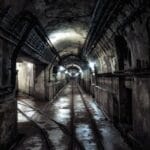Many relics of human history spark the imagination, often leading to extraordinary explanations beyond mainstream archaeology. Pseudo-archaeology offers dramatic solutions, driven more by belief than rigorous scientific investigation.
The “ancient alien theory,” popularized by Erich von Daniken, reinterprets the past through alleged contact between primitive humans and extraterrestrial visitors. This approach starts with the conclusion “aliens did it!” and interprets evidence to support it, contrasting with the scientific method.
Many monumental works like the Pyramids, Nazca lines, Stonehenge, Easter Island heads, and Baalbek have been attributed to extraterrestrial intervention. However, our ancestors were intelligent enough to create these structures. Genuine archaeologists acknowledge this, while ancient alien theorists often overlook human achievements in favor of fantastical beings.
Smaller artifacts often suffer from mistaken identification, pareidolia, ignorance of cultural context, or outright fakes. This list delves into these artifacts, providing more detailed explanations.
Related: Ten Mysterious Historical Questions We Still Can’t Answer
10. Coso Artifact
In 1961, three amateur geologists found what seemed to be a geode in the Coso Mountains near Olancha, California. Inside was a porcelain-like cylinder with a metal shaft, encased in a hexagonal copper sheath and an unknown substance. It appeared to be corroded metal with threads, suggesting a manufactured object. However, the geode had fossils at least 500,000 years old.
UFO enthusiasts and creationists quickly labeled it as evidence of ancient aliens or a young Earth. The artifact disappeared, leaving only X-rays taken by a creationist “scientist.” Spark plug collectors identified the X-rays as showing a 1920 Model T Ford spark plug.
How did it end up in a 500,000-year-old geode? The rock was described as “hardened clay,” unlike geodes with quartz crystals. Other objects like a nail and washer were also attached. Mining operations were common in the Coso Mountains in the 1920s, with workers using Ford Model T trucks. The Coso Artifact was likely a discarded spark plug.

For all the excitement and speculations, the Coso Artifact was just a used spark plug some mechanic threw away as trash. [1]
9. Baigong Pipes
In 1996, Chinese writer/archaeologist Bai Yu discovered metal pipes emerging from the floor and walls of a cave in Mount Baigong. Similar pipes were found on the hill’s surface and in a nearby lake.
Lab analysis revealed the pipes contained ferric oxide, silicon dioxide, and calcium oxide, with 8% being an unknown substance. Scientists estimated the pipes were 150,000 years old.
Ancient alien theorists suggested extraterrestrial visitors used the pipes to flush waste. Local authorities erected signs of the “alien structures” to attract tourists.
Scientists noted similarities to structures in Louisiana and elsewhere. Geologists determined these were fossilized tree roots, where sediments replaced wood, preserving the tree root’s external form while losing the internal structure. The Baigong pipes may have formed similarly. They could also be fissures filled with iron-rich sediments from floods after the Tibetan Plateau uplift.

In either case, natural geological forces created the Baigong pipes, not extraterrestrials. [2]
8. Abydos Helicopter
The temple of Seti I at Abydos contains hieroglyphs that appear to depict modern machines like a helicopter, submarine, tank, and aircraft. How did ancient Egyptians know of such technology?
The “helicopter” hieroglyph is an example of pareidolia, where the brain perceives patterns that aren’t really there. In ancient Egypt, hieroglyphs were often re-carved when a new pharaoh took the throne. Digital imaging shows the frieze originally read, “He who repulses the nine enemies of Egypt,” referring to Seti I (circa 1294–1279 BC). Upon Rameses II’s accession (circa 1279–1213 BC), it was covered in plaster, and the new inscription was carved: “He who protects Egypt and overthrows foreign countries.”

Over time, the plaster eroded, merging the two images and creating the appearance of a helicopter. [3]
7. Dendera Light
Another controversial Egyptian relief at the Dendera temple complex shows figures holding what appear to be Crookes tubes, vacuum-sealed containers that carry electricity. Some believe Egyptians illuminated their temples using this technology, explaining the lack of soot from torches (though soot layers have been found).
Misinterpretation of Egyptian religious symbolism misidentifies the relief, which depicts the creation of the world rather than electrical devices. The lotus flower symbolized the first thing to emerge from the sea of nothingness at the beginning of time, likely because it closes at night and reappears during the day. From the lotus sprang the god Atum (later merged with Ra), who created everything else. The Dendera relief shows Atum, represented as a snake, emerging from the lotus flower.

The “glass bulb” is the universe, represented by a bubble of air emerging from Atum. The figure with the upraised arm is the goddess Nun, who represents the primordial waters supporting the lotus flower, Atum, and the universe. Nun is depicted in similar poses in other reliefs, supporting the mainstream interpretation. [4]
6. Baghdad Battery
In the 1930s, archaeologist Wilhelm König discovered a peculiar artifact in Baghdad: a small clay pot with a missing top. Inside was a copper cylinder encased by an iron rod, sealed with asphalt. König suggested it might be an ancient battery, given that the two metals, combined with an electrolyte, form the main components of a battery.
Originally dated to the Parthian era (250 BC–225 AD), later investigations placed it in the Sassanid period (AD 250–650). König speculated it could have been used for electroplating, yet no electroplated objects from that time have been found, nor any wires to connect the battery. Experiments showed the jar could yield a volt of power, but this was too weak for practical use. No contemporary texts mention the device.

Contrary to claims of advanced ancient technology possibly gained from aliens, archaeologists don’t believe it was a battery. It resembled other clay jars used to store papyrus scrolls. The papyrus, wound around the metal rod, would decompose and leave acidic residue, explaining the traces found in the jar. [5]
5. Iron Pillar of Delhi
Amidst the ruins of the Qutb temple complex in Delhi, India, stands a 1,600-year-old iron pillar showing no rust or corrosion. Built around the time of King Chandragupta II (reigned AD 375–415), the pillar is 24 feet (7.3 meters) tall and 16.4 inches (41.6 cm) in diameter.
In 1333, Ibn Battuta wrote that it comprised “seven metals” and resisted iron’s effects.
Researchers discovered a thin layer of “misawite,” a compound of iron, oxygen, and hydrogen, protecting the pillar from rust. This layer formed due to the high phosphorous content (one percent) of the iron compared to modern iron (.05%). The ancient Indian iron-making process mixed iron ore with charcoal, resulting in higher phosphorous content than modern steel. Modern methods employ limestone, removing most of the phosphorus.

The iron pillar of Delhi is a testament to ancient Indian metallurgical and engineering prowess, not extraterrestrial intervention. [6]
4. Piri Reis Map
In 1513, Ottoman Turkish navigator Piri Reis compiled a detailed map seemingly showing Antarctica, a continent undiscovered until 1820. The Antarctic region is depicted ice-free, a condition that last occurred 34 million years ago. The map’s source of knowledge has puzzled scholars.
The Piri Reis map isn’t entirely accurate. Piri Reis himself cited his sources: eight Ptolemaic maps, four Portuguese maps, one Arabic map, and one drawn by Christopher Columbus, using available cartographic techniques. His Caribbean and North America are distorted. Mythical islands appear, while real ones are absent.

Drawing mythical lands into maps was common. The Garden of Eden, El Dorado, and Prester John’s kingdom appear in maps of the time. The Piri Reis map likely depicts the hypothesized Terra Australis Incognita (Unknown Southern Land), believed to exist to “balance out” the Northern Hemisphere, rather than Antarctica.
The Piri Reis map demonstrates Ottoman Turks’ navigational and cartographic skills were on par with Europeans. [7]
3. Quimbaya Airplanes
In the early 20th century, 135 gold objects were found near Colombia’s Magdalena River, where the Quimbaya people lived between 500 BC and AD 600. Included were figurines of humans, birds, insects, and fish. Some figures resemble airplanes with tails and delta wings. Ancient alien theorists call them “fighter jets,” suggesting the Quimbaya knew about powered flight with alien help.
If the collection depicts insects and fish, why not interpret the “fighter jets” as stylized representations of animals? The figurines are highly stylized and not realistic. The other animal figurines are crafted elaborately and fancifully. When ancient alien theorists built a scale model plane based on one figurine, they had to remove features to make it fly.

The objects in question also feature teeth and eyes, further suggesting they represent animals. [8]
2. Dogu Figurines
Scholars are still unsure about the Dogu figurines’ exact purpose. “Dogu” means “earthen figure” in Japanese and refers to odd, humanoid clay sculptures (4 to 12 inches/10 to 30.5 cm) from the Jomon Period (40,000–400 BC). Dogu have bulging eyes, elongated heads, and strange costumes. Some believe the ancient Japanese recreated visiting astronauts with helmets, goggles, and spacesuits.
With their wide hips and breasts, Dogu likely represent pregnant female forms, resembling fertility figures from other prehistoric cultures like the Venus figurines of Europe. They may have aided childbirth or been used in fertility or burial rituals. Alternatively, they could be toys. The “spacesuits” might not be spacesuits at all. The “goggles,” for example, resemble those worn by the Inuit for protection from snow blindness. Archaeologists are sure they don’t depict ancient astronauts.

1. Crystal Skulls
The Aztecs and Mayans were known for their fascination with human skulls. When crystal skulls appeared in the 19th century, museums like the Smithsonian and the British Museum sought these Mesoamerican masterpieces. People wondered how pre-Columbian natives carved the skulls with such detail without modern tools. Ancient alien theorists suggest extraterrestrial intervention.
The skulls’ authenticity was questioned in the 1930s, as none were found during archaeological digs. Museums found them to be fakes, likely manufactured in Germany. Records implicated Frenchman Eugene Boban, whose expertise in Mexican antiquities covered his trade in fake crystal skulls.

Despite the evidence, some still claim one genuine crystal skull exists, allegedly discovered in 1924 by Frederick Mitchell-Hedges and his daughter Anna in Belize. After her father’s death, Anna refused to have it tested. In 2007, the Smithsonian investigated and determined it was also a fake.
Ancient alien theorists persist in their beliefs despite the evidence, showing that rationality is no match for the need to believe. [10]
What do you think about these explanations? Leave your comment below!










